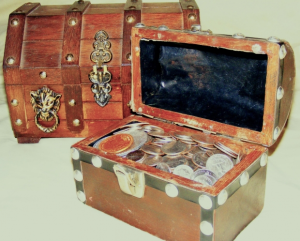
Pirate hideouts always entice with the lure of buried treasure.
Last week’s announcement that an American explorer might have found Captain Kidd’s treasure in Madagascar puts pirates back into the news. Madagascar was a famous 17th century pirate lair, but Germany had a pirate hideout too. A legendary pirate rendezvous in the 14-16th centuries, Heligoland – Germany’s only high sea island – harbored the country’s most famous pirate, Klaus Störtebeker. Shall we open Heligoland’s treasure chest and look at some of the colorful history inside?
Pirate Hideout Heligoland
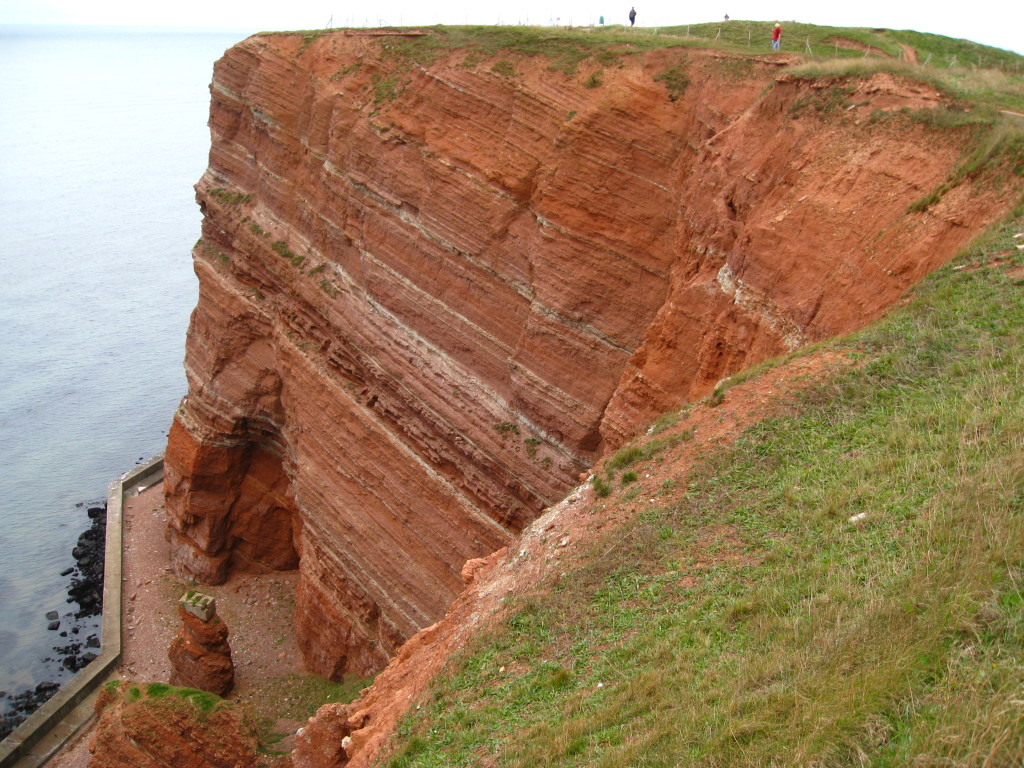
Heligoland is the North Sea’s only high sea island. Twenty-nine miles offshore, a splash of red sea cliffs, meadows, and white sands rises from the seafloor northwest of the German port Cuxhaven. It’s small – less than a square mile – but its allure made the literary rounds. Goethe wrote about it in 1827: “From the west, a description of the Island of Heligoland just reached me, with beautiful depictions of geological and biological nature, the amassed remains of prehistoric life, and fresh evidence for the survival and impact of the eternal world spirit.”*
Germany acquired Heligoland from England in 1890 in exchange for Zanzibar. A naval station during the two world wars, it served as the German base for the Battle of the Heligoland Bight. Now it attracts scientists, not warships. Heligoland hosts two biological research stations, one for birds and one for marine life.
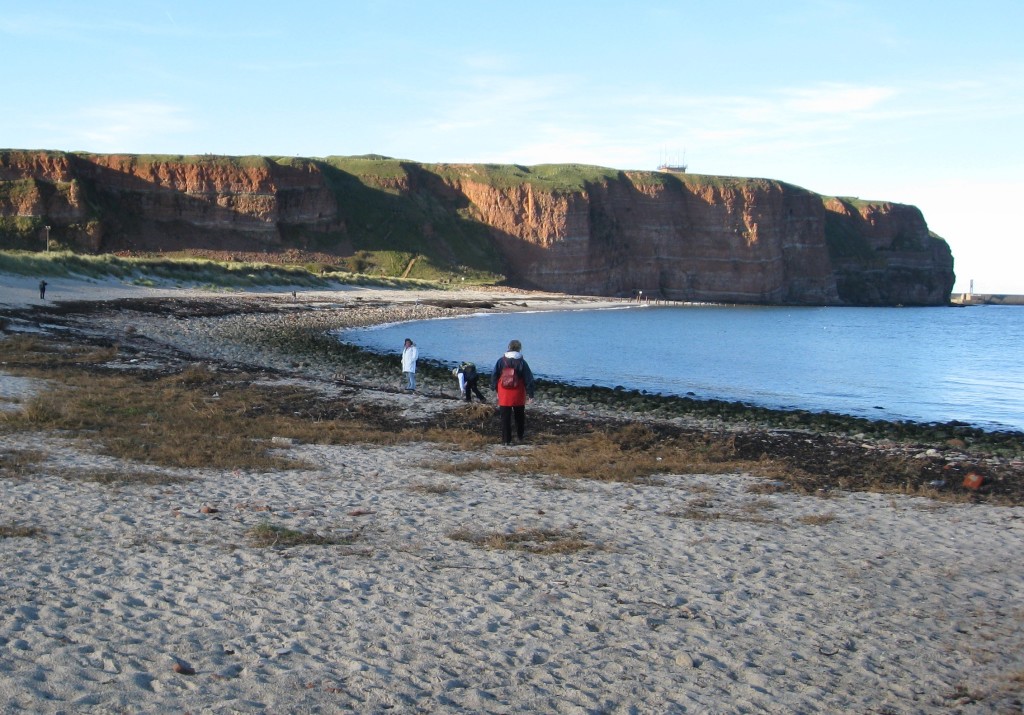
It is also the birthplace of quantum mechanics. In June 1925, Werner Heisenberg, a young German physicist, travelled to Heligoland to escape his hay fever on the mainland. There he made a major breakthrough – what has been called one of the major “jumps” in 20th century physics. “It was about three o’clock at night when the final result of the calculation lay before me…. At first I was deeply shaken…. I was so excited that I could not think of sleep. So I left the house … and awaited the sunrise on top of a rock…. That was ‘the night of Heligoland.’”** Heisenberg received the Nobel Prize in 1932.
The Pirate Störtebeker
What Heisenberg did for physics, Störtebeker did for German legend.
Klaus Störtebeker joined an infamous privateer group called the “Victual Brothers” in the late 14th century. They were mercenaries who fought for Denmark and Mecklenburg interchangeably in a series of conflicts in the North and Baltic Seas. Because Störtebeker took merchants captive, people later compared him to Robin Hood.
Pirates are fond of nicknames, and Störtebeker was no exception. In Low Saxon, “Störtebeker” means “empty the [gallon-sized] mug in one gulp.” He had a reputation for drinking too much wine.
When Denmark and Mecklenberg made a peace agreement in 1395, the Victual Brothers needed a new line of work. They first grounded a pirate town in Visby on the Swedish isle of Gotland in the Baltic Sea, but after they were attacked, the pirates moved to the North Sea. Störtebeker became one of their leaders. By 1400, Störtebeker had made Heligoland his basis.
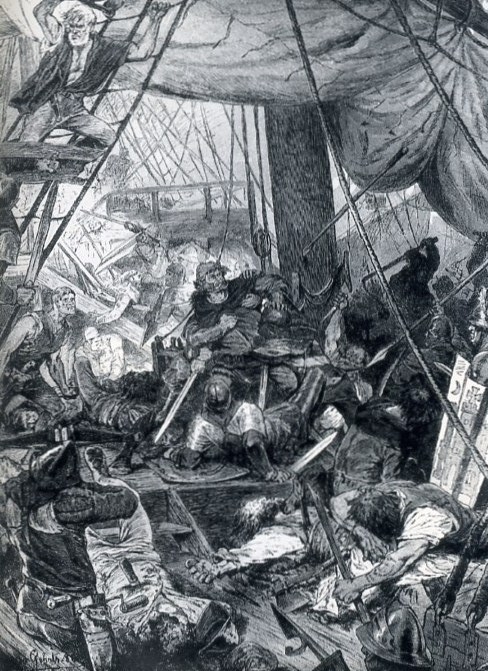
A fleet from Hamburg attacked Heligoland in 1401 and defeated the pirates in 1401. The Flemish ship “Painted Cow” defeated Störtebeker’s ship, “Red Devil.” Tradition has it that one of his crew turned traitor and poured molten lead down the Red Devil’s rudder shaft. The rudder froze, the pirate lost control of his ship, and Painted Cow gained an advantage. You can see a model of the Painted Cow in the cellar of Hamburg’s city hall (Ratskeller).
Germany’s most famous pirate was executed on October 21 of the same year. He begged for mercy for his fellow sailors, but was refused. About 75 pirates were executed that day.
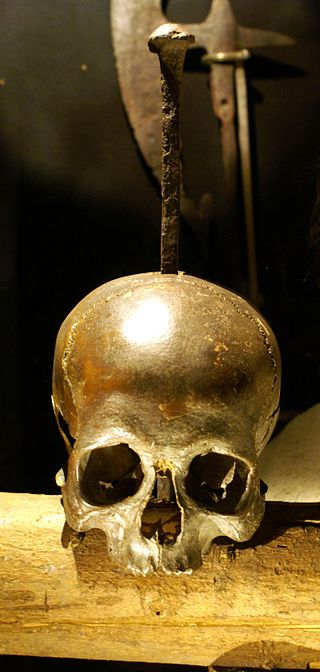
According to medieval tradition, people publically displayed the skulls of executed pirates on stakes. Two of these skulls have survived. Forensic scientists have examined them but can’t prove whether one was Störtebeker’s.
More than any other German outlaw, Störtebeker has become the stuff of legend and is a popular figure in German literature. Operas, poems, and novels etch the pirate legend into German culture.
Can you think of any other outlaws who are so celebrated?
Literature on point:
* Johann Wolfgang von Goethe & Carl Friedrich Zelter (Max Heller, ed.), Der Briefwechsel zwischen Goethe und Zeller, Vol. II (1819-1827) (Leipzig: Insel Verlag, 1915) p. 592.
** Mauro, Dardo, Nobel Laurietes and Twentieth-Century Physics (Cambridge: Cambridge University Press, 2004) p. 179.
Helmut Neuhold, Die berühmtesten Freibeuter und Piraten (Wiesbaden: marixverlag, 2013).





My cousin is going to an island to escape hay fever next month – maybe she will have a “night of Heligoland” (the Heisenberg kind not the Stortebeker kind…. although finding buried treasure would not be bad!)
Please tell me they have a Heligoland exhibit in LegoLand, Germany. (www.legoland.de)
They do have a pirate exhibit at Legoland, complete with an island, but it sure doesn’t look like Heligoland.
Should I ever find buried treasure, I’ll treat you to a bottle of rum, mate.
I guess the only other outlaws that are also celebrated are the western outlaws in the US. A few of them also developed reputations for “just” robbing the rich and occastionally helping the poor, although they usually helped themselves of course. I never would have guessed that Germany had pirates too, and what a nickname he had! “Empty the gallon sized mug in one gulp!”, that would have been something to see! It’s interesting that he has been the subject of operas, novels, and poems!
I guess there’s Robin Hood, too — another one who robbed the rich to help the poor, in legend, at least. But if you scratch a little deeper into history, truth is often more interesting than legend. I’m glad you learned something about German pirates. Thanks for commenting, Susan!